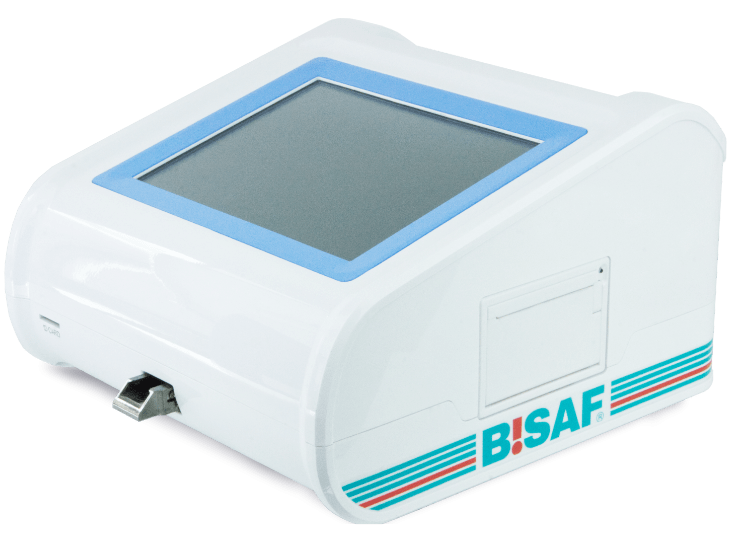COVID-19 and hormones (and more)
What’s new about COVID-19?
Dr Tzoulis P from the Medical School of London published a paper in JCEM showing that people with COVID-19 and low serum sodium levels were 56% likely to require intubation, assisted breathing and impaired respiratory function compared to 21% of those with normal blood sodium levels. The authors believe that low serum sodium is a high-risk factor for severe COVID-19 complications and death.

Previous data on the effects of COVID-19 on thyroid function have been controversial, Dr D Khoo, with colleagues at College Healthcare National Service Trust London, has published findings in JCEM on this issue. The authors compared thyroid function in a person with Covid-19 and healthy individuals in an observational study. Individuals with COVID-19 showed a significant reduction in their serum TSH and FT4 levels at the time of infection compared to pre-infection values. In the COVID-19 group, normal thyroid function before infection was shown in 86% of subjects. After the recovery, TSH and FT4 values in COVID-19 subjects returned to pre-infection values. Thus, in individuals with normal thyroid function, COVID-19 is not an indication for the incorporation of thyroid hormones.
It is important to stress that, similarly to sex hormones, the levels of vitamin D and the expression of its receptor in the cells of the immune system have a significant impact on the levels of pro-inflammatory cytokines by reducing their concentrations while stimulating anti-inflammatory cytokines, which is of great importance in the observed cytokine storm during COVID-19. Furthermore, the deficiency of this vitamin indirectly affecting the levels of sex hormones may affect the clinical course of COVID-19. As previously mentioned, it should be emphasised that the SARS virus enters human cells by blocking the cell receptor ACE2 (angiotensin-converting enzyme 2) on its surface. Vitamin D is closely associated with the function of the renin-angiotensin system. Long-term vitamin D deficiency may cause overactivation of this system and contribute to a more severe course of COVID-19 infection.
Also important is the fact that a high concentration of active vitamin D metabolites in blood results in stimulation of the production of a protein acting as a natural broad-spectrum antibiotic, i.e. human cathelicidin. Its production is triggered when bacteria come into contact with the cell wall in the presence of vitamin D metabolites. Besides its antibacterial activity (including mycobacterium tuberculosis), it shows anti-inflammatory activity by inhibiting cytokine production, which is essential for its protective effect in COVID-19 infection. Patients infected with HCV also show frequent vitamin D deficiency, which may affect the course of this disease. Vitamin D also reduces the risk of secondary bacterial infection, which is important because bacterial pneumonia often leads to serious complications and is responsible for most of the deaths associated with influenza infections.
Vitamin D deficiency is a predisposing factor for the occurrence of severe respiratory infections, such as bronchitis or pneumonia, including COVID-19. Vitamin D supplementation was shown to decrease the risk of acute infection by 12%, while in the group of people with vitamin D deficiency by as much as 70%. This is associated, among other things, with a decrease in the secretion of the cytokine interleukin IL-6. American researchers from Luisiana State University in New Orleans, analysed 20 patients with a severe course of COVID19, whose blood vitamin D results were known to show a significant decrease. Of this group of patients, 65% required a stay in the intensive care ward; in this group, significant vitamin D deficiency was found in 85% of patients, of which critical, i.e. below 20.0 ng/ml, was shown in 65%. In contrast, in the group not demanding intensive care, the percentage of vitamin D deficiency was 57%. These observations confirm other US data on COVID-19 mortality among the homeless. In the state of Louisiana, as many as 70% of COVID-19 deaths were reported among African-Americans (in this group, vitamin D deficiency occurs in 80-90% of individuals).
In the opinion of the international committee, vitamin D should be measured in the blood of all COVID19 patients and supplemented at a dose of 4000 IU/day. Of course, administration of vitamin D is an additive therapy, causing a milder course of this disease and not a targeted therapy. The above observations are confirmed by a 2020 publication in BMJ Nutrition, Prevention & Health. It shows that in the era of COVID-19, vitamin D supplementation of 4000 IU/die is recommended for adults as part of prevention and therapy if there are no contraindications to its use.
NOTE: An article has appeared in The Telegraph which reports the fantastic fact that the use of high doses of vitamin D in patients with COVID-19 lowers mortality from the disease by 60%!
And what’s new on the subject of sex hormones and COVID 19?
Dr.Madsen MC. from the Medical University of Amsterdam, analysed a problem concerning about 0.6% of men in the American population having a transsexual problem and using testosterone for this reason. The study group in the Netherlands had 1073 men observed for 20 years for an increase in their erythrocyte count, which is a risk of thrombosis, stroke or cardiac incident. This threat is increased in smokers, the obese and injecting testosterone users. A pathological increase in erythrocyte count was found in 10%. In these cases, the authors recommend quitting smoking, reducing body weight and using testosterone gel transdermally. The application of these recommendations resulted in a reduction of the increase in the red blood cell count in only 1% of the men.
I have deliberately quoted this very interesting work in the aspect of significant relations between sex hormones and the progression of COVID-19, which I have written about before and which is supported by current research. Androgen receptors have been found in B and T lymphocytes, monocytes/macrophages, neutrophils, dendritic cells and mast cells [1]. Changes in sex hormone levels and expression of their receptors in immune cells have been postulated to contribute to different immune responses in men and women and dysregulation of the immune system during aging. In animal models and in old men, it has been shown that an early reduced T-lymphocyte count and high cytokine levels after testosterone administration resulted in an increase in T-lymphocyte count and a fall in cytokine levels.
Drs.Pozzilli P.and Lenzi A. in their paper published in. “Metabolism Clinical and Experimental”, analysing patients infected with COVID-19 in Italy, found that 58% of the population was male, a percentage that increased with age to 66.6% in the 60-69 years range and 66.1% in the 70-79 years range. In comparison, there was a slightly higher incidence in women vs men in the 20-29 and 30-39 age ranges. In all age groups, mortality was higher in the male group. The leading severe clinical symptom of COVID-19 is pneumonia, showing a severe course by week 2-3 of the disease. It is known that testosterone levels in the blood of men decrease with biological age and accompanying diseases e.g. diabetes mellitus, nocturnal apnea are increased risk factors for the incidence and course of COVID-19. Dr.Pozzilli in his article showed that in men with obstructive pulmonary disease (OOPD) testosterone deficiency occurs from 22% to 69%. Therefore, low testosterone levels in this disease can result in reduced respiratory muscle activity and overall strength and exercise capacity, whereas this is not the case with normal testosterone levels.
A randomised clinical study showed improved maximal oxygen consumption in men receiving testosterone therapy. COVID-19 virus attacks alveolar epithelial cells using the already mentioned angiotensin II converting enzyme receptor (ACE2). This enzyme plays a defence role in the lungs, so the ACE 2 receptor binding to the virus may disrupt the lung defence pathway.
This enzyme has been shown to be a constituent of Leydig cells, suggesting its influence on testicular functions as a factor influencing testosterone production.
Testosterone plays a very important role as an agent that inhibits the “storm of pro-inflammatory cytokines”. In animal and human studies it has been shown that testosterone deficiency (hypogonadism) is associated with an increase in inflammatory cytokines and testosterone treatment reduced levels of the inflammatory cytokines IL- I beta , IL -6 , TNF alpha . Moreover, such an interrelation between cytokines and testosterone was also noted in elderly men. The suppression of ACE2 receptor expression by inflammatory cytokines, accompanied by a decrease in androgens and estrogens in the elderly, may indicate a negative correlation of ACE2 expression with COVID-19 mortality. The authors of the article recommend that testosterone levels should be monitored in patients with a positive COVID 19 test. If testosterone values are depressed (below 230.0 ng/dl) and there is no contraindication to this drug they recommend testosterone preferably in a form of gel, to reduce disease progression and the associated pulmonary syndrome.
Dr.Madsen MC. from the Medical University of Amsterdam, analysed a problem concerning about 0.6% of men in the American population having a transsexual problem and using testosterone for this reason. The study group in the Netherlands had 1073 men observed for 20 years for an increase in their erythrocyte count, which is a risk of thrombosis, stroke or cardiac incident. This threat is increased in smokers, the obese and injecting testosterone users. A pathological increase in erythrocyte count was found in 10%. In these cases, the authors recommend quitting smoking, reducing body weight and using testosterone gel transdermally. The application of these recommendations resulted in a reduction of the increase in the red blood cell count in only 1% of the men.







